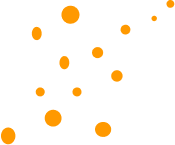For the students who are interested in NoSQL databases and MongoDB, Summer Internship on MongoDB in Kolkata certification course is a wonderful opportunity. Get enrolled in this course to take your skillset to a new height. You will learn how to model, ingest, query, replicate, and share data under this MongoDB training course. Besides learning MongoDB configuration and backup methods, you will also learn how to monitor and operate it. A 45-hour course is included in this comprehensive internship. Explore the course under the guidance of industry experts. Our goal is to help students in achieving their dreams.
We provide MongoDB training to help learners learn the major features of MongoDB so they can develop error-free applications. Our MongoDB online course starts with a hands-on exercise on installation and administration and then shows you how to configure the database to communicate with your IDE or programming language. Euphoria GenX summer internship on MongoDB includes:
Learn how to develop MongoDB-based applications
Complete design of a MongoDB database
Developing applications using MongoDB
Examining the key attributes and advantages of MongoDB over RDBMS databases
Analyzing the differences between RDBMSs and NoSQLs
Developing and running applications
Therefore, choose the right platform to make your career bright.
MongoDB
MongoDB
-
Module 1: Introduction
- What is MongoDB?
- Characteristics of MongoDB
- Understanding the MongoDB Ecosystem
- General Setup Instruction and Installing MongoDB
- Installing MongoDB Shell
- Shell vs Drivers
-
Module 2: Understanding the Basic & CRUD Operations
- Understanding Database
- Collections and Documents
- The Shell and MongoDB Drivers for Different Languages
- Creating Databases & Collections
- Understanding JSON Data
- Comparing JSON & BSON
- Create
- Read
- Update
- Delete (CRUD) & MongoDB
- Finding
- Inserting
- Deleting & Updating Elements
- Understanding "insertMany()"
- Diving Deeper Into Finding Data
- "update" vs "updateMany()"
- Understanding "find()"& the Cursor Object
- Understanding Projection
- Embedded Documents & Arrays - The Theory
- Working with Embedded Documents
- Working with Arrays
- Accessing Structured Data
-
Module 3: Schemas and Relations
- Why Do We Use Schemas
- Structuring Documents
- Data Types - An Overview
- Data Types in Action
- Data Types & Limits
- How to Derive your Data Structure – Requirements
- Understanding Relations
- One To One Relations – Embedded
- One To One - Using References
- One To Many – Embedded
- One To Many - Using References
- Many To Many – Embedded
- Many To Many - Using References
- Summarizing Relations
- Using "lookUp()" for Merging Reference Relations
- Planning the Example Exercise
- Implementing the Example Exercise
- Understanding Schema Validation
- Adding Collection Document Validation
- Changing the Validation Action
-
Module 4: Exploring The Shell and The Server
- Finding Available Options
- Settings “dbpath” and “logpath”
- Exploring the MongoDB Options
- MongoDB as a Background Service
- Using a Config File
- Shell Options & Help
-
Module 5: Using the MongoDB Compass to Explore Data Visually
- Exploring the MongoDB Compass
-
Module 6: Diving Into Create Operations
- Creating Documents - An Overview
- Understanding "insert()" Methods
- Working with Ordered Inserts
- Understanding the "writeConcern"
- The "writeConcern" in Practice
- What is Atomicity?
- Importing Data
- Wrap Up
-
Module 7: Read Operations - A Closer Look
- Methods
- Filters & Operators
- Operators - An Overview
- Query Selectors & Projection Operators
- Understanding "findOne()"&"find()"
- Working with Comparison Operators
- Querying Embedded Fields & Arrays
- Understanding "$in" and "$nin"
- "$or" and "$nor"
- Understanding the "$and" Operator
- Using "$not"
- Diving Into Element Operators
- Working with "$type"
- Understanding Evaluation Operators - "$regex"
- Understanding Evaluation Operators - "$expr"
- Diving Deeper Into Querying Arrays
- Using Array Query Selectors - "$size"
- Using Array Query Selectors - "$all"
- Using Array Query Selectors - "$elemMatch"
- Understanding Cursors, Applying Cursors
- Sorting Cursor Results
- Skipping & Limiting Cursor Results
- Using Projection to Shape our Results
- Using Projection in Arrays
- Understanding "$slice"
-
Module 8: Update Operations
- Updating Fields with "updateOne()"
- "updateMany()" and "$set"
- Updating Multiple Fields with "$set"
- Incrementing & Decrementing Values
- Using "$min"
- "$max" and "$mul"
- Getting Rid of Fields
- Renaming Fields
- Understanding "upsert()"
- Updating Matched Array Elements
- Updating All Array Elements
- Finding & Updating Specific Fields
- Adding Elements to Arrays
- Removing Elements from Arrays
- Understanding "$addToSet"
-
Module 9: Delete Operations
- Understanding "deleteOne()"&"deleteMany()"
- Deleting All Entries in a Collection
-
Module 10: Working with Index
- What Are Indexes & Why Do We Use Them?
- Adding a Single Field Index
- Understanding Index Restrictions
- Creating Compound Indexes
- Using Indexes for Sorting
- Understanding the Default Index
- Configuring Indexes
- Understanding Partial Filters
- Applying the Partial Index
- Understanding the Time-To-Live (TTL) Index
- Query Diagnosis & Query Planning
- Understanding Covered Queries
- How MongoDB Rejects a Plan
- Using Multi-Key Indexes
- Understanding Text Indexes
- Text Indexes & Sorting
- Creating Combined Text Indexes
- Using Text Indexes to Exclude Words
- Setting the Default Language & Using Weights
- Building Indexes
-
Module 11: Working with Geospatial Data
- Adding GeoJSON Data
- Running Geo Queries
- Adding a Geospatial Index to Track the Distance
- Adding Additional Locations
- Finding Places Inside a Certain Area
- Finding Out If a User Is Inside a Specific Area
- Finding Places Within a Certain Radius
-
Module 12: Understanding the Aggregation Framework
- What is the Aggregation Framework?
- Getting Started with the Aggregation Pipeline
- Using the Aggregation Framework
- Understanding the Group Stage
- Diving Deeper Into the Group Stage
- Working with $project
- Turning the Location Into a geoJSON Object
- Transforming the Birthdate
- Using Shortcuts for Transformations
- Understanding the $isoWeekYear Operator
- $group vs $project
- Pushing Elements Into Newly Created Arrays
- Understanding the $unwind Stage
- Eliminating Duplicate Values
- Using Projection with Arrays
- Getting the Length of an Array
- Using the $filter Operator
- Applying Multiple Operations to our Array
- Understanding $bucket
- Diving Into Additional Stages
- Writing Pipeline Results Into a New Collection
- Working with the $geoNear Stage
-
Module 13: Understanding the Aggregation Framework
- Module Introduction
- Number Types - An Overview
- Understanding Programming Language Defaults
- Working with int32
- Working with int64
- Doing Maths with Floats int32s & int64s
- What's Wrong with Normal Doubles?
- Working with Decimal 128bit
-
Module 14: MongoDB & Security
- Understanding Role Based Access Control
- Roles – Examples, Creating a User
- Built-In Roles - An Overview
- Assigning Roles to Users & Databases
- Updating & Extending Roles to Other Databases
- Adding SSL Transport Encryption
- Encryption at REST
-
Module 15: Performance, Fault Tolerancy and Deployment
- What Influences Performance?
- Understanding Capped Collections
- What are Replica Sets?
- Understanding Sharding
- Deploying a MongoDB Server
- Using MongoDB Atlas
- Backups & Setting Alerts in MongoDB Atlas
- Connecting to our Cluster
-
Module 16: Transaction
- What are Transactions?
- A Typical Usecase
- How Does a Transaction Work?
-
Module 17: From Shell to Driver
- Splitting Work Between the Driver & the Shell
- Preparing our Project
- Installing Visual Studio Code
- Installing the Node.js Driver
- Connecting Node.js & the MongoDB Cluster
- Storing Products in the Database
- Storing the Price as 128bit Decimal
- Fetching Data From the Database
- Creating a More Realistic Setup
- Getting a Single Product
- Editing & Deleting Products
- Implementing Pagination
- Adding an Index
- Signing Users Up
- Adding an Index to Make the Email Unique
- Adding User Sign In
-
Module 18: Introducing Stitch
- What is Stitch?
- Preparations
- Start Using Stitch
- Adding Stitch to our App & Initializing It
- Adding Authentication
- Sending Data Access Rules
- Fetching & Converting Data
- Deleting Products
- Finding a Single Product
- Adding Products
- Updating Products
- Switching to User Email & Password Authentication
- Adding User Sign Up & Confirmation
- Adding User Login
- Rules & Real Users
- Functions & Triggers
-
Module 18: Project Work and Documentation




































